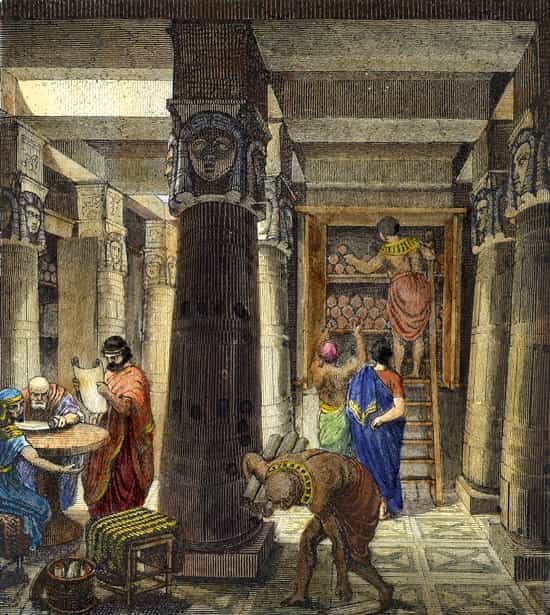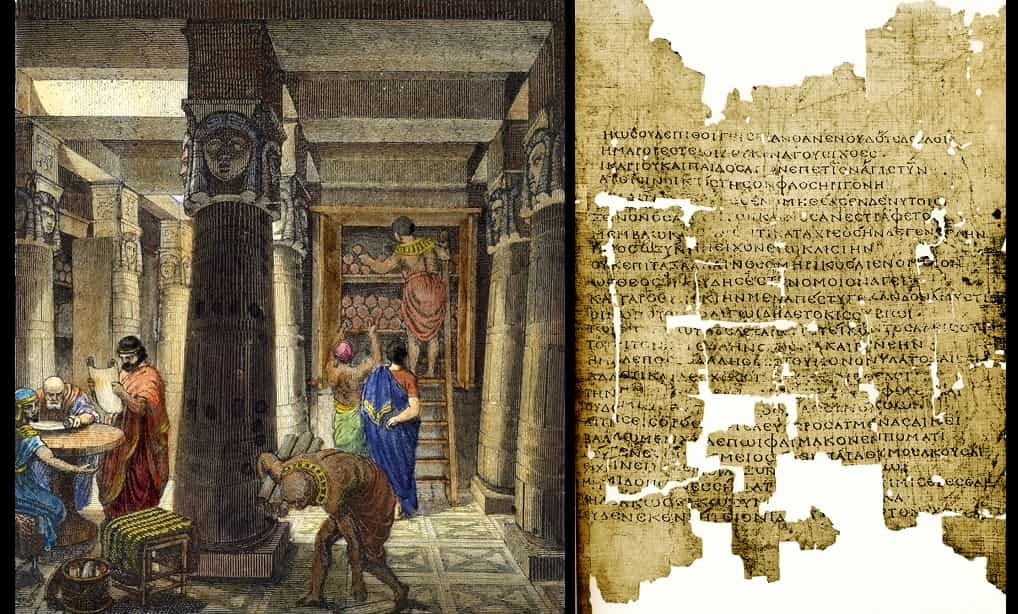The Library of Alexandria: Its Origins and Acquisitions
The Library of Alexandria was a renowned library in the ancient world and a center of knowledge dissemination. At its peak, it housed a staggering 900,000 manuscripts. The question remains: where did all these manuscripts come from and how did they reach the Library of Alexandria?
The Great Library of Alexandria
The idea of establishing the Great Library of Alexandria may have been proposed by Demetrius of Phalerum, an exiled Athenian statesman. Ptolemy I Soter, the ruler of Egypt and founder of the Ptolemaic dynasty, was responsible for materializing this idea. Like his predecessor, Alexander the Great, Ptolemy I was passionate about promoting Hellenic culture.
This center of learning was founded in the palace complex of the city of Alexandria at the beginning of the 3rd century BC during the Hellenistic period of ancient Egypt. It was part of a larger research institution called the Musaeum, which was dedicated to the nine goddesses of the arts, the Muses.
The Library of Alexandria not only served as a display of the Ptolemaic kings’ power but also helped to establish Alexandria’s dominance as Athens’ successor in promoting Greek culture. Many notable and influential scholars, including Zenodotus of Ephesus, Callimachus, Apollonius of Rhodes, Archimedes, and Euclid, worked in this massive and prestigious library.
Writers and Copyists
These and other scholars dedicated their time to research and teaching, as well as copying and translating manuscripts that arrived in Alexandria. They also wrote new original studies and added them to the collection, allowing the Library of Alexandria to produce its own copies.
How Did Manuscripts End up in the Library of Alexandria?
In order to amass a vast and diverse collection of manuscripts, the Library of Alexandria required a well-funded and clearly defined text acquisition policy. According to Lionel Casson’s book Libraries of the Ancient World, the Ptolemies developed an aggressive system of purchasing books.
Designated agents were sent to remote locations with the sole purpose of acquiring any books they found. They were given a substantial amount of money and any necessary resources for their travels. They were to obtain books and writings regardless of their subject matter, and it was crucial that they select the oldest copies available.
In ancient times, it was believed that the older a book was, the fewer times it had been copied, and the more faithful it would be to the original text. Consequently, the book buyers dispatched by the king made every effort to acquire the oldest, most legible copies that could be transported.
A Counterfeit Book Market
Some people, aware that book buyers sought out the oldest copies, created a profitable industry by artificially aging papyrus and parchment to obtain a higher price for their books. Those interested in purchasing old books had to examine each copy carefully to avoid being tricked.
Another Method of Obtaining Books for the Library of Alexandria
Apart from procuring books through purchases, the Ptolemies utilized another method to acquire more publications. They ordered that every ship arriving in Alexandria undergo a thorough inspection. If any books were found onboard, they were seized and taken to the library.
The scribes at the library were then tasked with creating copies of the confiscated books, leaving the originals in the library, and returning the copies to the ship. Fortunately, the Ptolemies had access to an abundance of papyrus in Egypt to produce paper and copy books without limits.
Books were also obtained by purchasing them from families and individuals who had been collecting or inheriting books for decades. It is believed that the sale and production of books began in Athens during the second half of the 5th century BC. Athenian society was renowned for its insatiable thirst for new knowledge, and it was common to find small libraries or bookshops on its streets.








